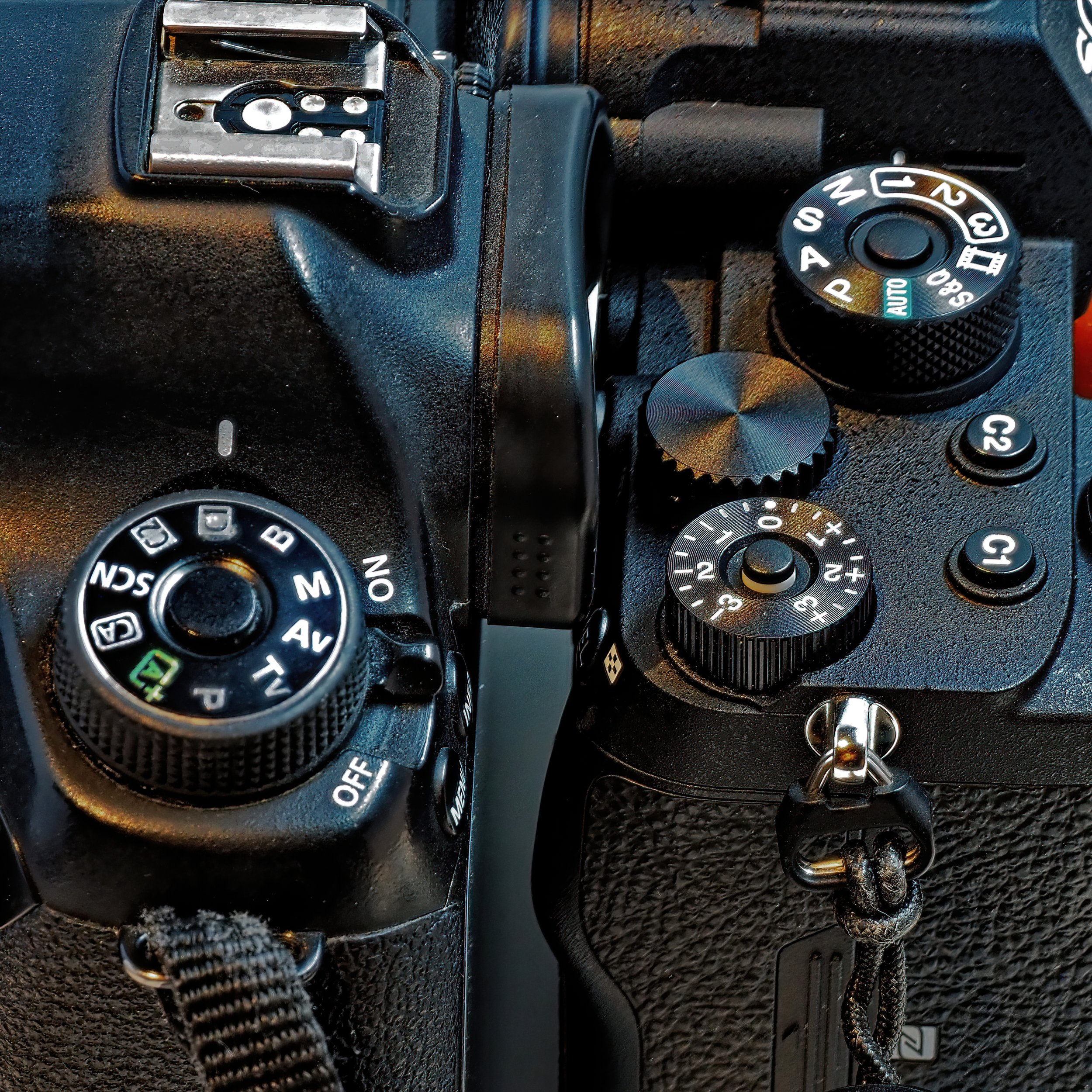The only way to grow is to continue to learn. Even Einstein had to learn from someone before he taught.
Here are some common photography terminology or words in simple explanations.
-

DSLR
The acronym DSLR, which stands for Digital Single Lens Reflex, finds its origins in the era of film cameras where Single Lens Reflex systems were prevalent. This camera type utilizes a mirror mechanism to redirect the incoming light to the viewfinder, enabling photographers to preview the scene before capturing an image. When the shutter button is pressed, the mirror swiftly flips up, allowing the light to directly reach the image sensor and record the visual information observed through the viewfinder.
-

Mirrorless
The designation "Mirrorless" aptly describes a new breed of cameras that have eliminated the need for a traditional mirror mechanism. With the advent of electronic viewfinders and live view rear panels, these cameras no longer rely on mirrors to reflect the image for previewing purposes. As a result, the term "Mirrorless" accurately captures this innovative design approach in the world of photography.
-

Optical / Digital zoom
Camera manufacturers often employ the concept of zoom as a key marketing feature, which can sometimes lead to confusion among consumers. It is important to note that not all zoom factors are equal, despite the common misconception. To better understand this distinction, consider optical zoom as akin to physically moving closer to the subject you wish to capture. In contrast, digital zoom involves magnifying the image while remaining in the same position, much like using a magnifying glass.
Optical zoom enables the photographer to capture finer details by physically approaching the subject, resulting in increased clarity and precision. On the other hand, digital zoom merely enlarges the image without capturing additional details. As a consequence, digital zoom often leads to pixelation and a loss of image quality as the image is artificially enlarged. It is therefore crucial for consumers to discern between optical and digital zoom capabilities to make informed decisions when selecting a camera.
-

ISO
An acronym for the International Organization for Standardization is a term commonly used to describe the sensitivity of a camera's image sensor. Historically, ISO was primarily associated with film sensitivity. In modern digital cameras, ISO values are represented by numerical ratings, typically ranging from 100 to 25600, although specific ranges may vary depending on the camera model.
The ISO setting plays a crucial role in determining the brightness of the resulting image. Higher ISO values yield brighter images, making them suitable for low-light conditions. However, it is important to note that increasing the ISO also introduces a grainy appearance, commonly referred to as noise, which can compromise image quality. Conversely, lower ISO values allow for capturing finer details but may result in darker images, particularly in situations with limited ambient light.
Understanding the relationship between ISO settings and image quality is essential for photographers to make informed decisions about adjusting ISO based on lighting conditions and desired outcomes.
-

PASM Dial
One of the primary control dials found on DSLR and mirrorless cameras, the mode dial allows users to select different shooting modes based on their preferences and creative intent. Each mode offers a distinct level of control over camera settings, catering to varying skill levels and shooting scenarios.
*P (Program Mode): Program mode can be seen as an advanced auto mode that offers a balance between control and automation. In this mode, the camera determines the optimal aperture and shutter speed settings based on the scene, while allowing the user to adjust the ISO sensitivity and other secondary settings.
*A or AV (Aperture Priority Mode): Aperture priority mode provides creative control over the depth of field. By selecting an aperture value (expressed as an f-number), users can influence the background blur (bokeh) effect. The camera then automatically adjusts the shutter speed and ISO to maintain proper exposure.
*S or TV (Shutter Priority Mode): Shutter priority mode is ideal for capturing fast-moving subjects or controlling motion blur. In this mode, the user selects a desired shutter speed, and the camera adjusts the aperture and ISO accordingly to achieve correct exposure. It is important to note that faster shutter speeds may require additional post-processing to compensate for reduced light.
*M (Manual Mode): Manual mode offers complete control over aperture, shutter speed, and ISO settings. Photographers who have a good understanding of aperture and shutter priority modes can explore manual mode to achieve precise control over exposure and creative effects. Manual mode is particularly useful in challenging lighting conditions or when specific artistic intentions need to be realized.
Understanding the functionalities and implications of each shooting mode empowers photographers to exercise greater control over their images, enabling them to express their artistic vision and capture scenes with desired levels of exposure, depth of field, and motion effects.
-

JPEG / JPG
JPEG, an acronym for Joint Photographic Experts Group, is a widely used image file format that employs compression techniques. The alternative spelling, JPG, refers to the same format but is used as a file extension. Initially developed in 1972, JPEG has undergone advancements and refinements, eventually becoming an internationally standardized format by the International Organization for Standardization (ISO) in 1992. Notably, the ISO referenced here is the same ISO setting found on your camera.
The primary advantage of JPEG is its ability to significantly reduce file size while maintaining an acceptable level of image quality. Additionally, individual camera brands often apply their proprietary colour science to the JPEG files produced by their cameras, resulting in distinct and recognizable colour characteristics. Notable examples include Leica and Fujifilm, renowned for their unique colour rendering.
JPEG is particularly suitable for users who prefer minimal editing or post-processing requirements. Its compact file size and embedded color profiles make it convenient for sharing and displaying images without significant modifications.
-

RAW
RAW refers to the unprocessed and uncompressed image format that retains all the data captured by the camera's sensor. Unlike JPEG, RAW files appear relatively flat and lack the color processing applied in-camera, resulting in a more neutral and less vibrant appearance on a computer screen. However, this characteristic provides greater flexibility and control during the editing process, allowing for adjustments that enhance the image's dynamic range, shadow detail, highlight retention, and other settings while preserving the original details.
Editing RAW images has significantly evolved over the years, thanks to the proliferation of presets and filters available in modern photo editing software. These tools streamline the editing workflow and facilitate the transformation of RAW files, making the process more efficient and accessible compared to the early days of RAW editing over a decade ago. As a result, photographers can now achieve desired enhancements and creative effects with relative ease when working with RAW files.
-

IBIS
In Body Image Stabilization (IBIS) is a technology designed to compensate for camera shake and movement, providing enhanced stability for capturing images. It operates by physically moving the camera's image sensor to counteract any motion detected. Integrated gyroscopes and accelerometers within the camera calculate the camera's movement and rotation in multiple axes, including yaw, pitch, roll, horizontal, and vertical motions.
Both IBIS and in-lens image stabilization (IS) serve the purpose of enabling handheld photography in challenging conditions, such as low light or long exposure situations, without the need for a tripod. While IS is specific to lenses equipped with stabilization capabilities, IBIS offers a higher level of versatility. IBIS can stabilize any lens, regardless of whether it has built-in image stabilization, making it particularly advantageous when using non-stabilized lenses, including vintage lenses with the aid of appropriate adapters. By accommodating a wide range of lenses, IBIS provides photographers with increased flexibility and creative opportunities in various shooting scenarios.
